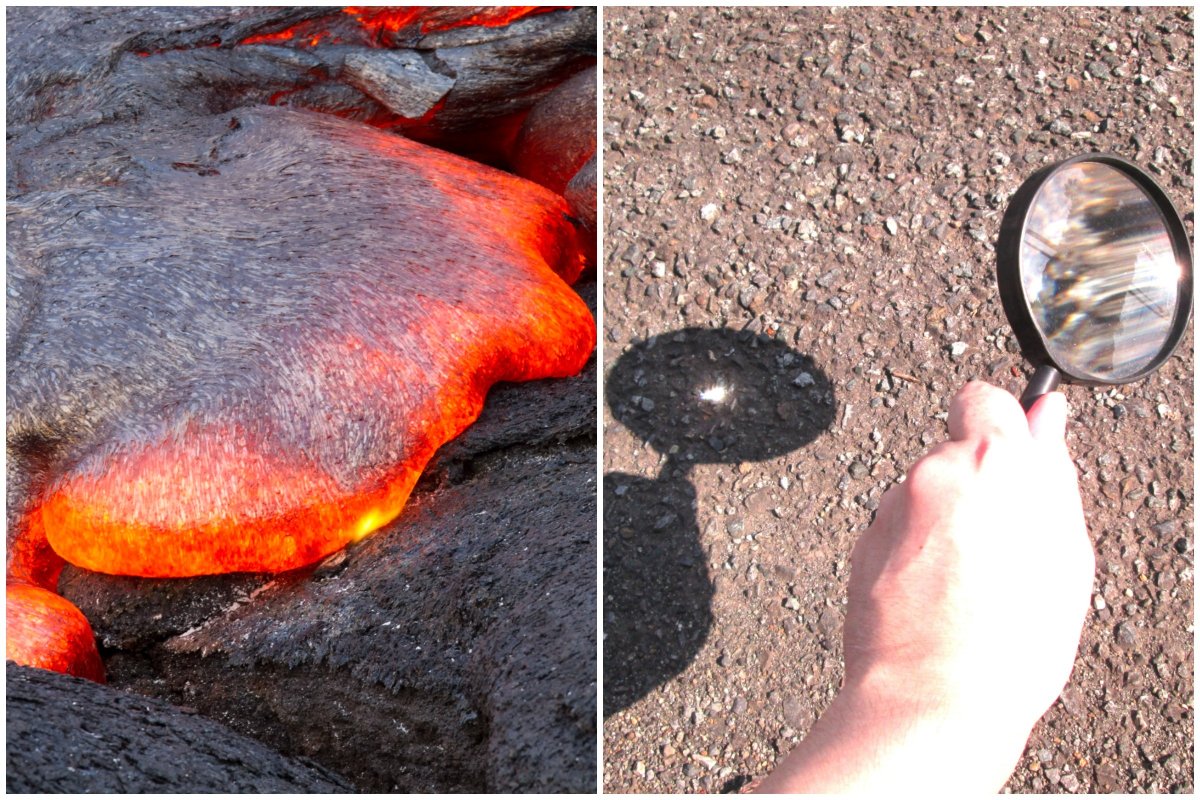A viral video of a man using the Sun and a giant lens to melt a rock and turn it into lava has left the internet stunned.
The clip was shared on the social media platform TikTok by user joemyheck. Since being uploaded on January 8, the clip has been viewed an estimated 1.4 million times and has been shared more than 9,030 times.
In the video, the camera pans from the bright Sun to a large lens, and then to a fist-sized rock being clutched in the user's hand.
A voiceover said: "Watch the power of the January Sun through this giant lens melt this rock."
As the clip continued, the lens could be seen focusing a blisteringly hot multi-colored light onto the rock.
Within seconds, the focused light burned a hole into the rock, with lava forming and oozing from a crack.
The user added: "This lens channels the light to a point, which is focused on the rock. After about a minute, the surface of the rock turns to lava and starts to drip down the front of it.
"As I take the light off you can see the glowing lava in the sunlight and then it cools into black obsidian. As I take a closer look there are fissures in the rock and the obsidian formation is totally cool."
The video attracted thousands of commenters, many of whom were stunned by what they had just witnessed.
One TikTok user jokingly commented: "The rock is very unhappy during this process."
Another added: "Can you make a bunch of these and scatter them around? Just to confuse future archeologists?"
A third commenter appeared stunned and said: "When he said 'melt the rock,' I was like…'Yeah, sure (laughing emoji face). But then bro (three shocked emoji faces).
Newsweek has contacted joemyheck for comment.
According to Penn State College of Earth and Mineral Science, there are three basic ways that rocks melt naturally in order to form lava: decompression, conduction and volatiles.
Decompression melting happens at mid-ocean ridges. As two plates move apart, they form a space that can be filled by hot rock. But the rock can melt as the pressure decreases as the rock gets closer to the surface.
In terms of volatiles, the college said rocks can melt at a lower temperature in the presence of volatiles, such as water and carbon dioxide.
Finally, rocks can melt via conduction. This happens when hotter particles come into contact with other nearby particles which transfer some of those nearby particles.

Uncommon Knowledge
Newsweek is committed to challenging conventional wisdom and finding connections in the search for common ground.
Newsweek is committed to challenging conventional wisdom and finding connections in the search for common ground.
About the writer
Anders Anglesey is a U.S. News Reporter based in London, U.K., covering crime, politics, online extremism and trending stories. Anders ... Read more





